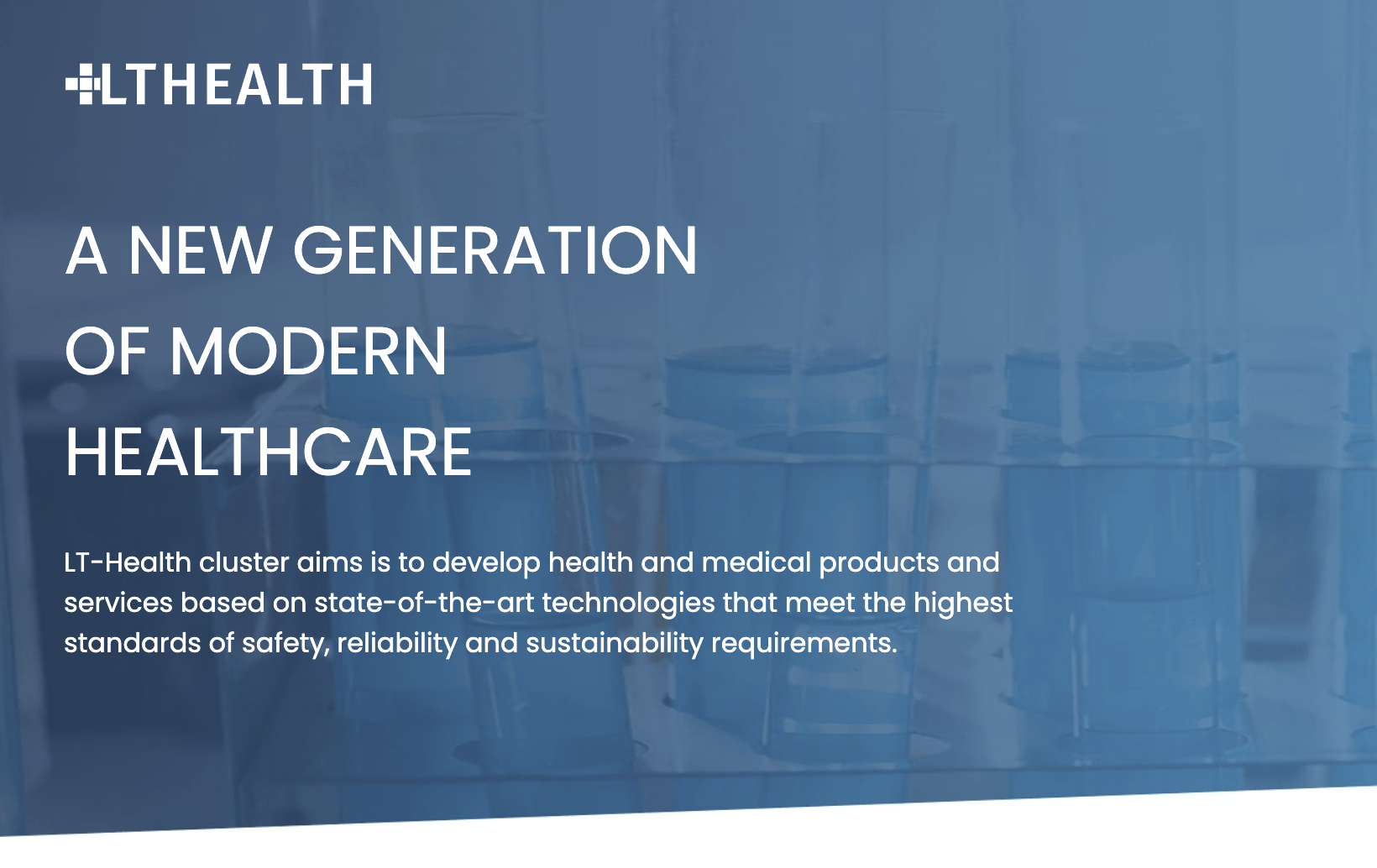Knee ligament injuries, particularly those affecting the anterior cruciate ligament (ACL), are prevalent in sports and active lifestyles, necessitating precise diagnostic tools for effective treatment planning and monitoring. Historically, the KT1000 and KT2000 knee ligament arthrometers have been the gold standards in ACL injury assessment, providing objective measurements of knee laxity and aiding clinicians in diagnosing ligamentous injuries.
The KT1000/KT2000 arthrometers revolutionized the field of orthopedic diagnostics with their ability to quantify anterior tibial translation, a critical parameter for assessing ACL integrity. Despite their widespread use and significant contribution to knee injury diagnostics, these devices are no longer manufactured, creating a gap in the market for reliable, objective knee laxity measurement tools.
Today, clinicians and orthopedic practitioners seeking these arthrometers must rely on the second-hand market, which poses challenges in terms of availability and equipment condition. Concurrently, advancements in technology have introduced sophisticated alternatives, including manual arthrometers like the Lachmeter and Rolimeter, and advanced robotic arthrometers such as DYNEELAX® and GNRB®. These modern devices offer enhanced diagnostic capabilities, surpassing the limitations of their predecessors. This article explores the current options for sourcing KT1000 and KT2000 arthrometers and presents the benefits of adopting advanced alternatives for superior knee ligament assessment and patient care.
I. Historical Overview of the KT1000/KT2000 Arthrometers
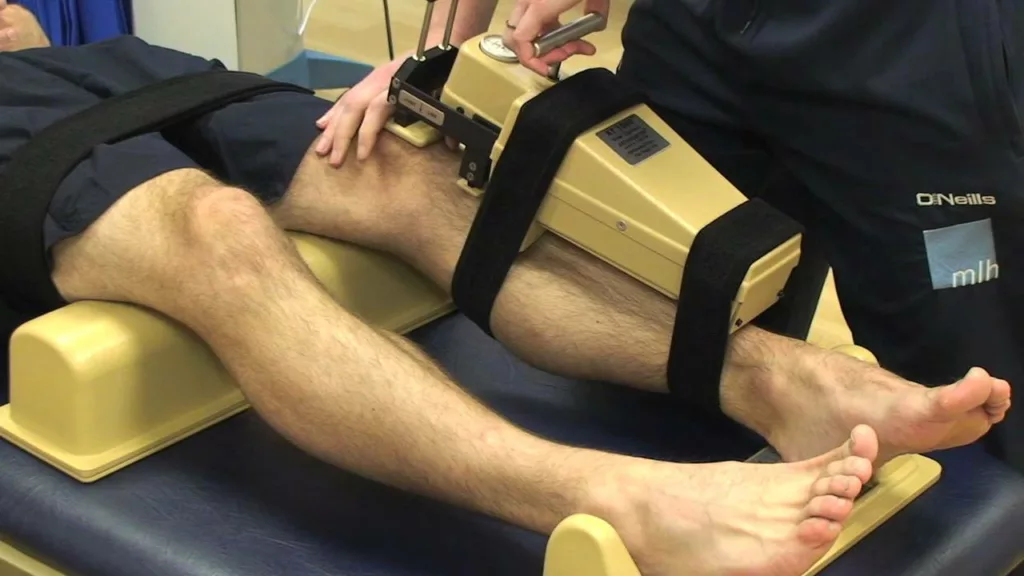
The KT1000 and KT2000 arthrometers were developed in the late 20th century and quickly became indispensable tools in the evaluation of ACL injuries. These devices allowed clinicians to objectively measure knee laxity by quantifying the degree of anterior tibial translation relative to the femur. This measurement is crucial for diagnosing the extent of ACL tears and planning appropriate treatments.
In clinical practice, the KT1000 and KT2000 arthrometers were valued for their accuracy and reliability. They provided a standardized method to assess ACL integrity, which was particularly beneficial for determining the necessity and timing of surgical interventions. Over the years, these devices contributed significantly to the understanding and management of ACL injuries, facilitating improved patient outcomes.
Despite their historical significance, the KT1000 and KT2000 arthrometers are no longer manufactured. Advances in technology and changes in the market demand have led to the development of newer diagnostic tools, causing these once-ubiquitous devices to become scarce. As a result, medical professionals seeking to use KT1000 or KT2000 arthrometers must turn to the second-hand market, where availability and equipment condition can vary widely.
The discontinuation of these arthrometers has prompted the need for modern alternatives that can provide equally reliable or superior diagnostic information. This shift underscores the importance of staying updated with the latest advancements in orthopedic diagnostic tools to ensure optimal patient care.
II. Where to Find KT1000 and KT2000 Arthrometers Today
Given the discontinuation of the KT1000 and KT2000 arthrometers, acquiring these devices has become a challenge. The primary avenue for obtaining these tools is through the second-hand market, which includes medical equipment resellers, online marketplaces, and orthopedic networks.
Medical Equipment Resellers: Specialized resellers often deal in refurbished medical equipment, including discontinued devices like the KT1000 and KT2000. These resellers can be a reliable source as they typically ensure that the equipment is in working condition and may offer limited warranties or maintenance services.
Online Marketplaces: Platforms such as eBay, Craigslist, and other online auction sites occasionally list KT1000 and KT2000 arthrometers. While these sources can be convenient, it is crucial to exercise caution. Potential buyers should verify the condition and authenticity of the devices, check for any signs of wear and tear, and, if possible, request a demonstration of the equipment’s functionality.
Orthopedic Networks and Forums: Engaging with professional networks and online forums dedicated to orthopedic surgery and sports medicine can also yield opportunities to purchase second-hand KT1000 and KT2000 arthrometers. Colleagues and fellow professionals may have surplus equipment or know of reliable sources.
When purchasing used medical equipment, consider the following risks and considerations:
- Calibration and Accuracy: Ensure that the arthrometer has been properly calibrated and can provide accurate measurements. Calibration services may be required, which could add to the cost.
- Wear and Tear: Check for physical wear and tear that could affect the device’s performance. Request detailed photographs and, if possible, a video demonstration.
- Lack of Warranty and Support: Second-hand devices typically do not come with warranties or technical support. Be prepared for potential maintenance issues and the lack of manufacturer support.
Despite these challenges, acquiring a second-hand KT1000 or KT2000 arthrometer can be a viable option for clinicians who are familiar with these devices and their capabilities. However, exploring modern alternatives that offer enhanced features and support may provide greater long-term benefits.
III. Current Manual Arthrometer Options
With the discontinuation of the KT1000 and KT2000 arthrometers, clinicians have turned to alternative manual arthrometers for assessing knee ligament laxity. Among the available options, the Lachmeter and Rolimeter are two notable manual arthrometers that provide reliable measurements in the absence of more advanced devices.
Lachmeter: The Lachmeter is designed to measure anterior tibial displacement, similar to the KT1000 and KT2000. It is a simple, hand-held device that allows clinicians to perform the Lachman test, a widely used maneuver for detecting ACL tears. The Lachmeter provides a quantitative measure of knee laxity, offering a straightforward and effective method for ACL assessment. Its compact size and ease of use make it a practical tool for clinical settings, particularly for quick evaluations and follow-up assessments.
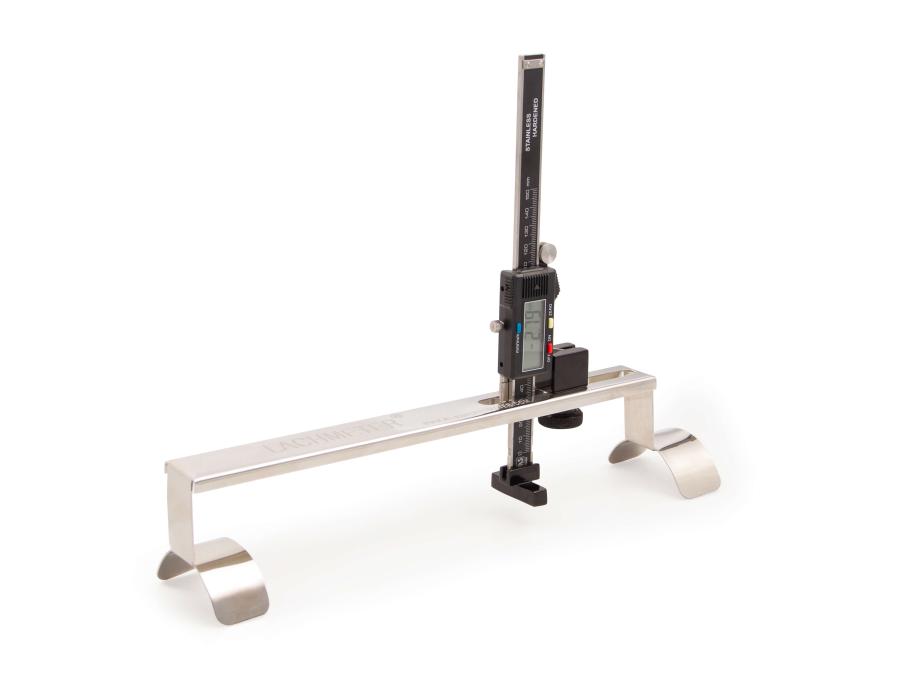
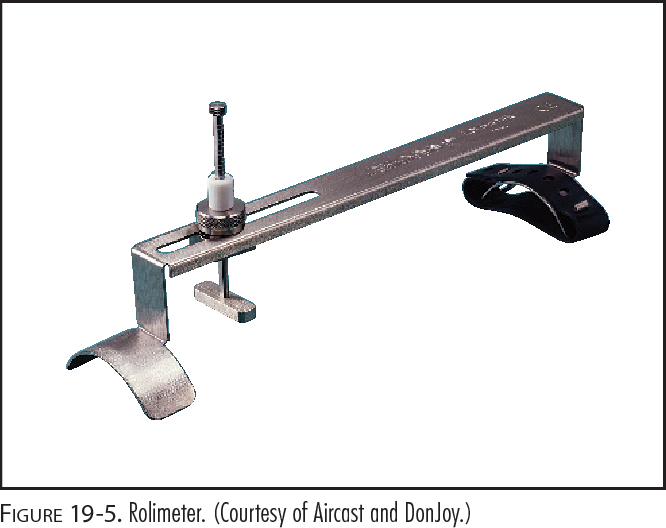
Rolimeter: The Rolimeter functions similarly to the Lachmeter but incorporates a different mechanism for measuring anterior tibial displacement. This device also supports the Lachman test and offers additional features for evaluating posterior and lateral knee stability. The Rolimeter is valued for its versatility and the ability to provide comprehensive knee stability assessments, making it a useful tool in various clinical scenarios.
While manual arthrometers like the Lachmeter and Rolimeter are effective for basic knee laxity measurements, they have certain limitations compared to more advanced devices:
- Manual Operation: These devices rely on manual operation, which can introduce variability in measurements due to differences in clinician technique and force application.
- Limited Data: Manual arthrometers provide limited quantitative data, focusing primarily on anterior tibial displacement without the ability to assess rotational stability or dynamic knee behavior.
- Subjectivity: The accuracy of manual measurements can be influenced by the clinician’s experience and skill, potentially affecting diagnostic precision.
Despite these limitations, manual arthrometers remain valuable tools for initial assessments and routine follow-ups. They are cost-effective and accessible, making them suitable for a wide range of clinical environments. However, for more comprehensive diagnostics and surgical planning, clinicians may benefit from exploring advanced robotic arthrometers that offer enhanced capabilities and greater diagnostic precision.
IV. Advanced Injury Diagnostics with Robotic Arthrometers: GNRB and Dyneelax
In the realm of knee ligament assessment, advanced robotic arthrometers like the DYNEELAX® and GNRB® represent the forefront of technological innovation. These devices offer significant improvements over traditional manual arthrometers, providing enhanced diagnostic capabilities and greater accuracy.
4.1 GNRB Arthrometer

The GNRB® (Genourob®) arthrometer is a state-of-the-art device designed to measure anterior tibial displacement with high precision. Unlike manual arthrometers, the GNRB applies controlled forces to the tibia while stabilizing the patella, thus minimizing the influence of muscular activity and patient positioning on the measurements. Studies such as the one from Robert (2009), Colette (2012) and Klasan (2019) have show the superiority of the GNRB compared to the KT-1000 / KT-2000 units. Furthermore, key features and benefits of the GNRB include:
- Objective Measurements: The GNRB® provides objective, quantifiable data on knee laxity, improving the accuracy of ACL injury diagnoses. Saravia et al. (2020) demonstrated the validity and reliability of the GNRB® in evaluating ACL injuries, showing it to be a reliable tool for measuring anterior knee laxity with high intra-class correlation coefficients (ICC).
- High Reliability: Studies have shown that the GNRB® has excellent intra-rater reliability. For instance, Magdic et al. (2023) found that the GNRB had ICC values ranging from 0.756 to 0.848 at forces of 134 N and 200 N, indicating good reliability in measuring knee anterior laxity.
- Superior Sensitivity: The GNRB® can detect partial ACL tears more accurately than MRI. A study by Cojean et al. (2023) found that the GNRB outperforms MRI in analyzing partial ACL ruptures, offering better diagnostic accuracy and specificity.
- Dynamic Assessment: The GNRB® allows for dynamic assessment of the knee joint which is very complimentary to the static assessments done nowadays with MRI.
4.2 Dyneelax Arthrometer
The Dyneelax arthrometer extends the capabilities of knee laxity measurement by incorporating rotational analysis. Developed as a new generation of arthrometers after the GNRB®, the DYNEELAX® offers comprehensive assessments of both translational and rotational knee laxity. This advanced device not only measures the anterior-posterior displacement of the tibia but also evaluates internal and external rotational stability of the knee, providing a more holistic view of knee joint integrity. By incorporating rotational analysis, the DYNEELAX® can detect subtle instabilities that might be missed by devices focusing solely on translational movement. This feature is particularly crucial for diagnosing complex ligament injuries and planning appropriate surgical interventions. Key features of the Dyneelax include:
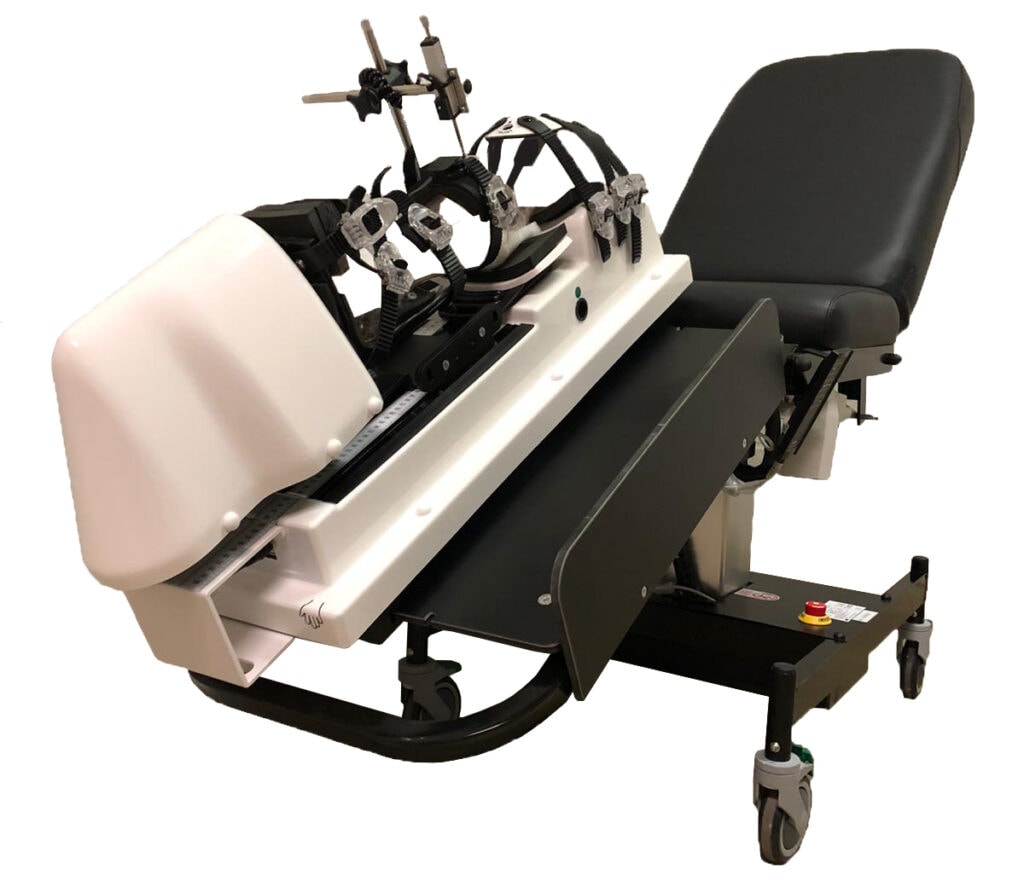
- Translation and Rotation Measurement: The DYNEELAX® measures both anterior tibial translation and internal/external tibial rotation, providing a more complete picture of knee stability and the integrity of peripheral structures. Nascimento et al. (2024) demonstrated that the Dyneelax has excellent reliability for measuring both translational and rotational laxity, with ICC values ranging from 0.91 to 0.96.
- Enhanced Reliability: Recent studies indicate that the DYNEELAX® exhibits excellent intra-rater reliability for both anterior tibial translation and rotational laxity. This was confirmed in a study by Nascimento et al. (2024), which showed high reliability metrics for various measurements, including anterior translation and internal/external rotations.
- Clinical Utility: The DYNEELAX®‘s ability to assess both translation and rotation makes it particularly useful in planning ACL reconstruction surgeries and evaluating the need for additional procedures like LET. Cojean et al. (2023) highlighted the sensitivity, repeatability, and reproducibility of the DYNEELAX®, underscoring its clinical value in ligament assessments.
V. Revolutionary Post-Operative Monitoring and Rehabilitation
Both the GNRB® and DYNEELAX® are invaluable tools for post-operative monitoring. They can be used as early as one month post-surgery to apply controlled forces (e.g., 100N), allowing clinicians to monitor graft integration and adjust rehabilitation protocols based on precise data. This personalized approach can significantly enhance the success rates of ACL rehabilitation, ensuring that patients recover more effectively and return to their activities with restored knee function. Kayla Smith (2022) noted that using robotic arthrometers like GNRB® for early post-operative assessments could personalize and improve ACL rehabilitation outcomes.
Additionally, Senioris et al. (2017) emphasized the importance of measuring both rotational laxity and anterior translation for comprehensive post-operative assessments. Nouveau et al. (2017): highlighted the influence of early solicitations on the final stiffness of the graft, indicating the need for precise tools like GNRB® and DYNEELAX® to monitor these changes. Forelli et al. (2023) demonstrated the critical role of detailed laximetry in post-operative rehab, confirming that early and accurate monitoring can lead to better recovery trajectories.
Furthermore, Pouderoux et al. (2019) showed the evolution of joint laxity and graft compliance in the first year post-ACL reconstruction, underscoring the need for precise monitoring tools like the GNRB® and DYNEELAX®. Semay et al. (2016) provided evidence on the stabilization of knee laxity metrics after ACL reconstruction, supporting the use of advanced arthrometers for ongoing post-operative evaluation.
VI. Cost Considerations and Value Proposition
When considering the acquisition of knee ligament assessment tools, cost is a significant factor. It’s important to compare the expenses associated with second-hand KT1000/KT2000 arthrometers, manual arthrometers, and advanced robotic arthrometers like the GNRB® and DYNEELAX® to understand the value each option offers.
6.1 Second-Hand KT1000/KT2000 Arthrometers
Purchasing a second-hand KT1000 or KT2000 arthrometer can seem cost-effective initially. These devices, though no longer manufactured, are still available through medical equipment resellers and online marketplaces at reduced prices. However, these savings come with potential drawbacks:
- Maintenance and Calibration Costs: Second-hand devices may require recalibration or repairs, adding to the initial cost.
- Limited Support and Warranty: Unlike new equipment, second-hand devices often lack warranties and technical support, which can be crucial for maintaining their accuracy and reliability.
- Obsolescence: As technology advances, older devices may not meet the current standards for diagnostic accuracy and efficiency.
- KT1000/ KT2000 Arthrometer Price: The second hand KT units often range from $ 1 500 USD to $ 7 000 USD given their rarity.
6.2 Manual Arthrometers
Manual arthrometers such as the Lachmeter and Rolimeter are relatively inexpensive and straightforward to use. These devices can be ideal for basic assessments and routine follow-ups. However, they have limitations:
- Variability in Measurements: Manual operation can introduce variability, depending on the clinician’s technique.
- Limited Data: They primarily provide measurements of anterior tibial translation and lack the comprehensive diagnostic capabilities of more advanced devices.
- Manual Arthrometer Price: The price of these manual arthrometers range from $ 700 USD to $ 1 500 USD.
6.3 Advanced Robotic Arthrometers: GNRB and Dyneelax
Investing in advanced robotic arthrometers like the GNRB® and DYNEELAX® involves a higher upfront cost but offers substantial long-term benefits:
- Superior Diagnostic Accuracy: These devices provide precise and objective measurements of knee laxity, both in translation and rotation, ensuring more accurate diagnoses.
- Comprehensive Data: GNRB and DYNEELAX® offer detailed assessments, including dynamic knee behavior and rotational stability, which are critical for effective surgical planning and post-operative monitoring.
- Enhanced Patient Outcomes: By enabling early detection of partial ACL tears and personalized rehabilitation protocols, these devices can significantly improve patient recovery and overall outcomes.
- Robotic Arthrometer Price: The advanced medical devices can range from € 9 500 EUR to more than € 95 000 EUR.
6.4 Value Proposition
While the initial investment in GNRB® and DYNEELAX® may be higher, the advanced diagnostic capabilities, reliability, and potential to improve patient outcomes make them a valuable addition to any orthopedic practice. Here’s why investing in these robotic arthrometers is advantageous:
-
Superior Diagnostic Accuracy: The GNRB® and DYNEELAX® diagnose partial ACL ruptures better than MRI (Cojean et al. (2023). This means that in cases where an ACL injury is suspected, these arthrometers can be used as a first-line diagnostic tool. Given the average price of an MRI in the USA is $1350, an arthrometer test at $800 provides a cost-effective alternative. Seeing 10 ACL-related patients a month, a typical volume, results in significant ROI, especially considering the device’s cost of around $100,000.
-
Comprehensive Data: The DYNEELAX® provides crucial translational and rotational analysis, offering new feedback that guides surgical decisions, such as choosing between lateral extra-articular tenodesis (LET) or Lemaire procedures. This comprehensive data aids in more precise surgical planning and improved patient outcomes.
-
MRI Resource Management: By using arthrometers as an initial diagnostic tool, MRI resources can be better managed and reserved for cases where ACL ruptures are confirmed. This approach ensures more efficient use of MRI facilities, reducing wait times and optimizing the overall diagnostic process.
-
Dynamic and Static Assessments: While the arthrometers provide excellent initial diagnostic information and dynamic assessments, it remains important to perform MRI for confirmed ACL ruptures. This complementary approach ensures both dynamic and static evaluations, enhancing overall diagnostic accuracy.
-
Post-Operative Monitoring: Monitoring the graft post-surgery is crucial. The GNRB and DYNEELAX® can be used as early as one month post-surgery to apply controlled forces (100N max force), allowing clinicians to monitor graft integration and adjust rehabilitation protocols based on precise data. This personalized approach significantly enhances the success rates of ACL rehabilitation, ensuring that patients recover more effectively and return to their activities with restored knee function.
In conclusion, while manual and second-hand arthrometers may offer lower upfront costs, the advanced features and long-term value of robotic arthrometers like the GNRB and DYNEELAX® present a compelling case for investment in modern, reliable diagnostic technology. These devices not only improve diagnostic accuracy and patient outcomes but also offer a significant return on investment through cost-effective initial assessments and enhanced post-operative monitoring.
Conclusion
In the evolving landscape of knee ligament assessment, the discontinuation of KT1000 and KT2000 arthrometers has paved the way for more advanced diagnostic tools. While second-hand and manual arthrometers like the Lachmeter and Rolimeter provide basic functionalities, they fall short of the comprehensive capabilities offered by modern robotic arthrometers such as the GNRB® and DYNEELAX®.
The GNRB® and DYNEELAX® arthrometers stand out for their superior diagnostic accuracy, particularly in detecting partial ACL ruptures where they outperform MRI. Their ability to provide both translational and rotational measurements enhances surgical planning, guiding decisions on procedures like LET or Lemaire techniques. These devices also facilitate better MRI resource management by serving as effective first-line diagnostic tools, ensuring MRIs are reserved for confirmed cases.
Moreover, the advanced features of these robotic arthrometers significantly benefit post-operative monitoring and personalized rehabilitation. By offering precise, dynamic assessments, the GNRB and Dyneelax enable early intervention and tailored rehab protocols, improving patient outcomes and recovery times.
Despite a higher initial investment, the long-term benefits, including cost savings from reduced MRI usage and improved patient care, justify the expenditure. In summary, the GNRB and Dyneelax arthrometers are invaluable assets for any orthopedic practice, providing comprehensive, reliable, and efficient knee ligament assessments that enhance both diagnostic and therapeutic processes.
Medical References
- Robert, H., Nouveau, S., Gageot, S., & Gagnière, B. (2009). A new knee arthrometer the GNRB®: Experience in ACL complete and partial tears. Orthopaedics & Traumatology: Surgery & Research, 95, 171-176. DOI: 10.1016/j.otsr.2009.03.009.
- Collette, M., Courville, J., Forton, M., & Gagnière, B. (2012). Objective evaluation of anterior knee laxity; comparison of the KT-1000 and GNRB arthrometers. Knee Surg Sports Traumatol Arthrosc. DOI: 10.1007/s00167-011-1869-2
- Klasan, A., Putnis, S.E., Kandhari, V., Oshima, T., & Parker, D.A. (2019). Anterior knee translation measurements after ACL reconstruction are influenced by the type of laximeter used. Knee Surgery, Sports Traumatology, Arthroscopy. DOI: 10.1007/s00167-020-05950-5
- Magdić M, Gošnak Dahmane R, Vauhnik R. (2023). Intra-rater reliability of the knee arthrometer GNRB® for measuring knee anterior laxity in healthy active subjects. Journal of Orthopaedics. DOI: 10.1016/j.jor.2023.03.016
- Smith K, Miller N, Laslovich S. (2022). The Reliability of the GNRB® Knee Arthrometer in Measuring ACL Stiffness and Laxity: Implications for Clinical Use and Clinical Trial Design. Int J Sports Phys Ther, 17(6), 1016-1025. DOI: 10.26603/001c.38252
- Nascimento, N., Kotsifaki, R., Papakostas, E., Zikria, B. A., Alkhelaif, K., Hagert, E., Olory, B., D’Hooghe, P., & Whiteley, R. (2024). DYNEELAX Robotic Arthrometer Reliability and Feasibility on Healthy and Anterior Cruciate Ligament Injured/Reconstructed Persons. Translational Sports Medicine, 2024(1), 1-5. DOI: 10.1155/2024/3413466
- Cojean, T., Batailler, C., Robert, H., Cheze, L. (2023). Sensitivity repeatability and reproducibility study with a leg prototype of a recently developed knee arthrometer: The DYNEELAX®. Medicine in Novel Technology and Devices, 19, 100254. DOI: 10.1016/j.medntd.2023.100254
- Cojean T, Batailler C, Robert H, Cheze L. (2023). GNRB® laximeter with magnetic resonance imaging in clinical practice for complete and partial anterior cruciate ligament tears detection: A prospective diagnostic study with arthroscopic validation on 214 patients. Knee, 42, 373-381. DOI: 10.1016/j.knee.2023.03.017
- Forelli F, Le Coroller N, Gaspar M, et al. (2023). Ecological and Specific Evidence-Based Safe Return To Play After Anterior Cruciate Ligament Reconstruction In Soccer Players: A New International Paradigm. IJSPT. Published online April 2, 2023. DOI: 10.26603/001c.73031
- Semay, B., Rambaud, A., Philippot, R., Edouard, P. (2016). Evolution of the anteroposterior laxity by GnRB at 6 9 and 12 months post-surgical anterior cruciate ligament reconstruction. DOI: 10.1016/j.rehab.2016.07.045
- Pouderoux, T., Muller, B., Robert, H. (2019). Joint laxity and graft compliance increase during the first year following ACL reconstruction with short hamstring tendon grafts.. DOI: 10.1007/s00167-019-05711-z
- Nouveau, S., Robert, H., Viel, T. (2017). ACL Grafts Compliance During Time: Influence of Early Solicitations on the Final Stiffness of the Graft after Surgery. Journal of Orthopedic Research and Physiotherapy, 3(1), 035. DOI: 10.24966/ORP-2052/100035
- Senioris, A., Rousseau, T., L’Hermette, M., Gouzy, S., Duparc, F., & Dujardin, F. (2017). Validity of rotational laxity coupled with anterior translation of the knee: A cadaveric study comparing radiostereometry and the Rotab®. The Knee. https://doi.org/10.1016/j.knee.2017.01.009






